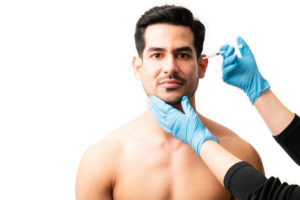
But no matter what procedures and treatments come and go, Botox remains the king of the aesthetic universe.
Every year since 2002, the year the FDA approved Botox for aesthetic use, neuromodulator injections have been the most popular cosmetic treatment. Of those neuromodulator injections, Botox is far and away the predominant choice.
Botox has become such a common brand that it’s easy to overlook it when all sorts of new treatments come to the fore. But Botox still has the most loyal following for a simple reason — it works.
Since Dr. Lipton only carries Botox for our neuromodulator offering, let’s celebrate it this month.
What is Botox?
Botox (like Dysport, Xeomin, and new Jeuveau) is classified as a neuromodulator. It is made from the botulinum toxin type A, the same bacteria that cause botulism. This sounds scary, but it isn’t. Back in the 1950s, scientists discovered that the botulinum toxin, when injected in very tiny amounts into a muscle, caused that muscle to stop contracting for a period of time. Initially, this proved useful for treating involuntary eyelid spasms, the original FDA approval for Botox. Since that time, the uses of Botox have expanded to migraine headaches, excessive underarm sweating, TMJ disorders, and even overactive bladders.
But Botox became famous in 2002 when the FDA approved it for the treatment of wrinkles and lines on the upper third of the face. Since that approval for cosmetic use, Botox injections have been the world’s most popular cosmetic procedure, both surgical and non-surgical, every year worldwide.
How does Botox work?
Botox works on what are called “dynamic” wrinkles. These are wrinkles that form when a muscle contracts beneath the skin. These wrinkles are the domain of the upper third of the face, the expressive area. When you squint, frown, show surprise, and make other expressions, muscles contract on the forehead and around the eyes. Over time, as your skin becomes less elastic, wrinkles begin to accompany these expressions. The result? Crow’s feet, the 11s between your eyebrows, and forehead lines.
When Botox is injected into a muscle, the botulinum toxin blocks the nerve messages sent from the muscle to the brain. When injected into the muscle that creates your crow’s feet, for instance, Botox blocks the nerve message to the brain. The brain never gets the message to contract the muscle, so it stays relaxed and the wrinkle on the surface skin doesn’t form.
Do you want to erase your crow’s feet or the dreaded 11s? Call Dr. Lipton at (972) 420-0023 to set up your Botox session.

